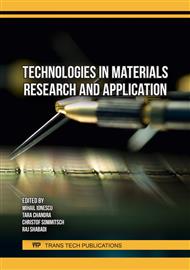p.73
p.81
p.87
p.95
p.103
p.109
p.117
p.123
p.129
Determination of the (New) Product Dimensional Window
Abstract:
An important aspect of New Product Development (NPD) is the determination of the expected product dimensional window, describing the maximum strip width, that can be produced for a given strip thickness. The estimation of the product dimensional window is used to safely execute first rolling trials. In addition, one can verify in advance whether customer geometry specifications of the final strip can be reached. For this purpose, offline simulation tools are used for hot rolling as well as cold rolling. An accurate prediction of the deformation resistance and interstand softening behaviour of the new steel grade is key in the determination of the dimensional window. Preferably, the deformation resistance model is validated with experimental data, for example from tensile tests or laboratory mini-mills. Rolling simulations are performed, using prescribed process conditions with respect to for example load distributions, temperature and rolling speed requirements. The dimensional windows of respectively the hot strip mill and the cold strip mill are merged, resulting in a final product dimensional window, indicating the maximum strip width at a final, customer specified, strip thickness.
Info:
Periodical:
Pages:
103-108
Citation:
Online since:
December 2023
Authors:
Price:
Сopyright:
© 2023 Trans Tech Publications Ltd. All Rights Reserved
Share:
Citation:



